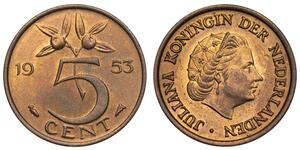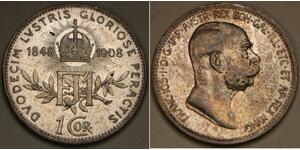India Mohur monetary unit
The Mohur was a historical monetary unit used in India during the Mughal and British colonial periods. Here's an overview of the Mohur:
Origin: The term "Mohur" is derived from the Persian word "muhar," meaning "sealed" or "stamped." It was originally used to refer to a gold coin issued by various Muslim dynasties in the Indian subcontinent, including the Mughals.
Mughal Period: During the Mughal Empire (1526–1857), the Mohur was a gold coin of standard weight and purity. It was initially introduced by Emperor Akbar and continued to be minted by subsequent Mughal rulers. The design of the Mughal Mohur typically featured Persian inscriptions and motifs, along with the name and titles of the reigning emperor.
Value: The value of the Mohur varied depending on factors such as the weight of the gold used, purity, and prevailing economic conditions. It was a high-denomination coin, typically used for large transactions and as a symbol of wealth and prestige.
British Colonial Period: With the establishment of British colonial rule in India, the Mohur continued to be minted as a gold coin. The British East India Company and later the British Crown issued Mohurs with British monarchs' effigies and inscriptions in English and Persian.
End of Circulation: The Mohur remained in circulation as a legal tender coin in India until the early 20th century. However, with the decline of the gold standard and the adoption of paper currency, its use diminished. The last Mohurs were minted for collectors rather than for circulation.
Numismatic Value: Today, Mughal and British Indian Mohurs are highly sought after by collectors and numismatists for their historical significance, artistic beauty, and rarity. They are often auctioned or traded at high values based on factors such as their condition, rarity, and historical provenance.
You may be interested in following coins
2025-05-24
- New coin is added to 5 Cent Kingdom of the Netherlands (1815 - ) Bronze
5 Cent Kingdom of the Netherlands (1815 - ) Bronze
group has 7 coins / 7 prices
⇑
Netherlands - 5 Cents 1953 - Juliana, High Quality
2025-05-23
- New coin is added to 1 Corona Austria-Hungary (1867-1918) Silver Franz Joseph I ( ...
1 Corona Austria-Hungary (1867-1918) Silver Franz Joseph I ( ...
group has 25 coins / 17 prices
⇑
AUSTRIA 1 Corona 1908 - Silver 0.835 - 60 A. Reign of Franz Joseph - aUNC -2673*




-300-150-VITBwcI0OHQAAAEqPTlDRaZv.jpg)

-300-150-AeIKqUpY7NEAAAFhroEy54Nz.jpg)


